|
ABC News PrimeTime, November
2, 2000
The Village of Long
Life
ABCNEWS.COM, Nov. 2, 2000 — Every morning,
Hiroshi Sakamoto wakes up and farms his field, usually
for about four or five hours a day. Sakamoto, who
lives in the village of Yuzuri Hara, two hours outside
of Tokyo, is 86 years old. But his age by no means
makes him the elder statesman of his village, nor
is a daily routine like his uncommon among his peers.
More than 10 percent of the population of his village
is 85 or older — 10 times the American norm.
The residents of Yuzuri Hara are not only living
longer, but they are also quite healthy. Rarely
do they have any reason to see a doctor, and they
are hardly affected by diseased like cancer, diabetes
and Alzheimer’s. Many have even managed to
keep their skin from showing signs of aging.
What makes the residents of Yuzuri Hara even more
remarkable is that they are living long, healthy
lives — even those who engage in unhealthy
activities. Sakamoto, for example, smokes a pack
and a half of cigarettes daily and is still in reasonably
good health and physically fit. Tadanao Takahashi,
93, has worked in the sun for 50 years, never once
using sun block or skin cream, and yet his skin
is soft and smooth.
Some medical researchers believe that Yuzuri Hara,
known as The Village of Long Life, and its
residents may hold the key to anti-aging secrets:
the local diet that is unique to the village. Unlike
other regions of Japan that grow rice, Yuzuri Hara’s
hilly terrain is better suited to harvesting different
carbohydrates that may prove healthier: things like
satsumaimo, a type of sweet potato; satoimo, a sticky
white potato; konyaku, a gelatinous root vegetable
concoction; and imoji, a potato root.
The Secret Ingredient
Dr. Toyosuke Komori, the town doctor who has studied
and written books on longevity in Yuzuri Hara, believes
these locally grown starches help stimulate the
body’s natural creation of a substance called
hyaluronic acid, or HA, which aging bodies typically
lose. This may ward off the aging process by helping
the cells of the body thrive and retain moisture,
keeping joints lubricated, protecting the retina
in eyes and keeping skin smooth and elastic. “I
have never seen anyone suffer from skin cancer here,”
he says. “I have seen a woman in her 90s with
spotless skin.”
One of Japan’s leading pharmaceutical companies
began researching and developing a pill supplement
containing hyaluronic acid. The company tested the
pills on 1,000 people, and said roughly half reported
smoother skin, less fatigue and better eyesight.
In the United States, hyaluronic acid has been used
for years in eye surgery as a shock absorber to
protect the retina, and has been proven effective
in lubricating arthritic joints. Synvisc, for example,
a Food and Drug Administration approved product
used to treat osteoarthritis, works by injecting
hyaluronic acid, or Hyaluronan, which acts as a
shock absorber and lubricant.
Dr. Irving Raphael, a Syracuse, N.Y., orthopedist
who specializes in sports medicine, explains that
these injections coat the surface of the joint to
decrease friction, which allows the joint to move
more smoothly and cuts down pain. “When I prescribe
it,” he says, “I simply tell my patients
I’m going to give them a lube job.” But,
he warns, before prescribing it, he always asks
if the patient is allergic to chicken or eggs. That’s
because HA is extracted from chicken combs. The
mohawk crown on a chicken’s head is washed,
sliced and purified.
Western Skeptics
While hyaluronic acid has proven useful in orthopedics
and opthalmology, many Western experts are skeptical
that swallowing it in a pill could actually help
prolong one’s life.
“I cannot today imagine any possible benefit,”
says Dr. Endre Balazs, a leading expert on HA. “The
only way it acts, as far as I can see, as an anti-aging
remedy,” adds Raphael, “is because if
you’re not limping, and your joints feel better,
you feel younger.” But HA has been shown to
have wound-healing and tissue-reconstruction applications,
and some cosmetic companies tout it as an effective
ingredient in moisturizers that can soften facial
lines, leaving skin elastic and firm. One company
even claims it may be the latest development in
treating hair loss.
Dr. Komori, 80, who has adopted the local diet of
very little meat and a lot of homegrown sticky starches,
holds to his theory. “I feel very strongly
that if I had not come here to Yuzuri Hara, I would
not have lived this long and healthy a life,”
he says. “I probably would have died from some
adult disease.”
Komori also points to statistics that since Western-style
processed food infiltrated the village a few years
ago, heart disease has doubled. With youngsters
being seduced by these products, what the Japanese
call an upside-down death pyramid has emerged, in
which adults die before their elderly parents. “Although
my children ate what I had been eating while they
were young and lived here,” says a 91-year-old
woman who has outlived two of her six children,
“when they moved away they chose to eat differently.”
|
|
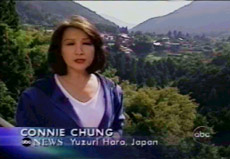 |
| Connie Chung reporting from
Yuzuri Hara, the "Village of Long Life"
in Japan. |
| |
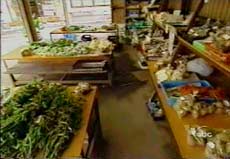 |
| Japanese researchers believe
the unique local diet may hold the key to anti-aging
formula. |
| |
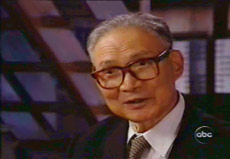 |
| Dr. Komori, 80, moved to Yuzuri
Hara more than forty years ago, studied and
written books on local longevity. |
| |
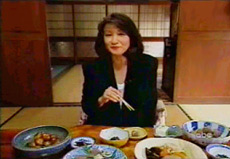 |
| Dr. Komori believes
the local grown starches stimulate the body's
creation of Hyaluronic Acid (HA). |
| |
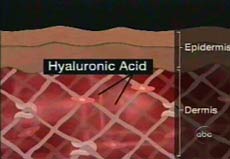 |
| HA content in human decreases
as we get older. Typical signs of aging are
age spots, skin wrinkles, hair loss, joints
problem and deteriorate eyesight. |
| |
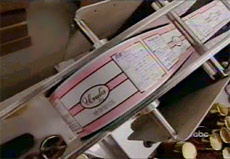 |
| Urula HA-DS is developed in
Japan. It's an anti-aging food supplement containing
Hyaluronic Acid (HA). Many users reported smoother
skin, less fatigue and better eyesight. |
| |
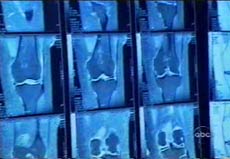 |
| In the US, Hyaluronic Acid
has been used for years to treat osteoarthritis
as well as for other medical and cosmetic applications. |
| |
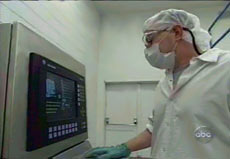 |
| HA is extracted and purified
from chicken combs, the mohawk crown on a chicken’s
head. So, be ware if you are allergic to chicken
or eggs. |
| |
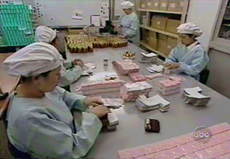 |
| Attentively made and quality controlled in
Japan, every box of Urula HA-DS is imported to the US in its
original package to ensure the highest purity. |
| |
| |
| |
|









